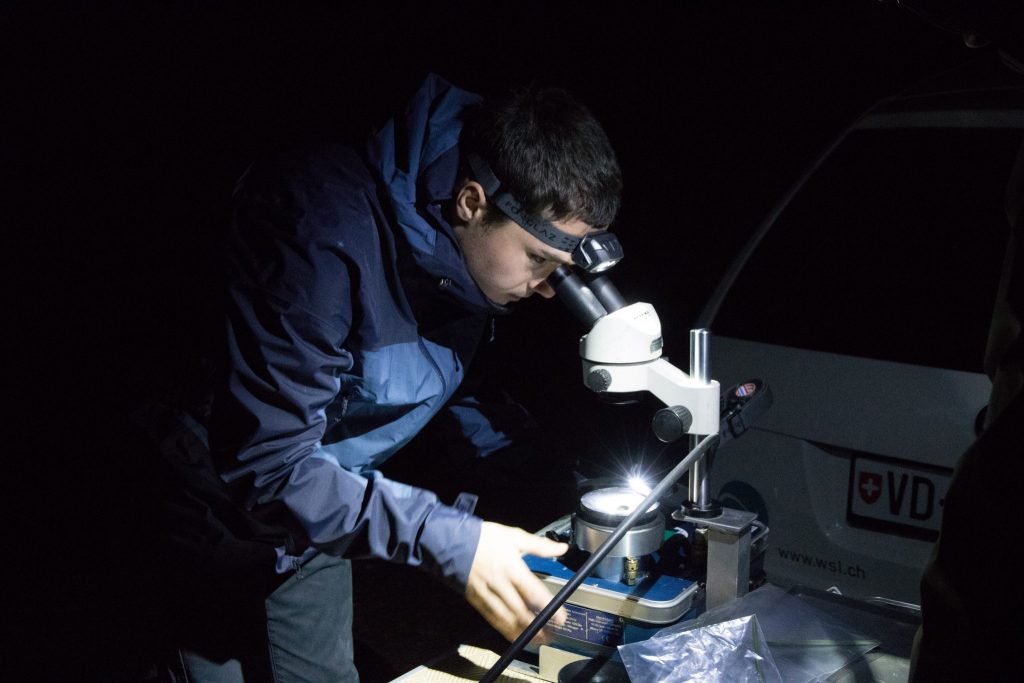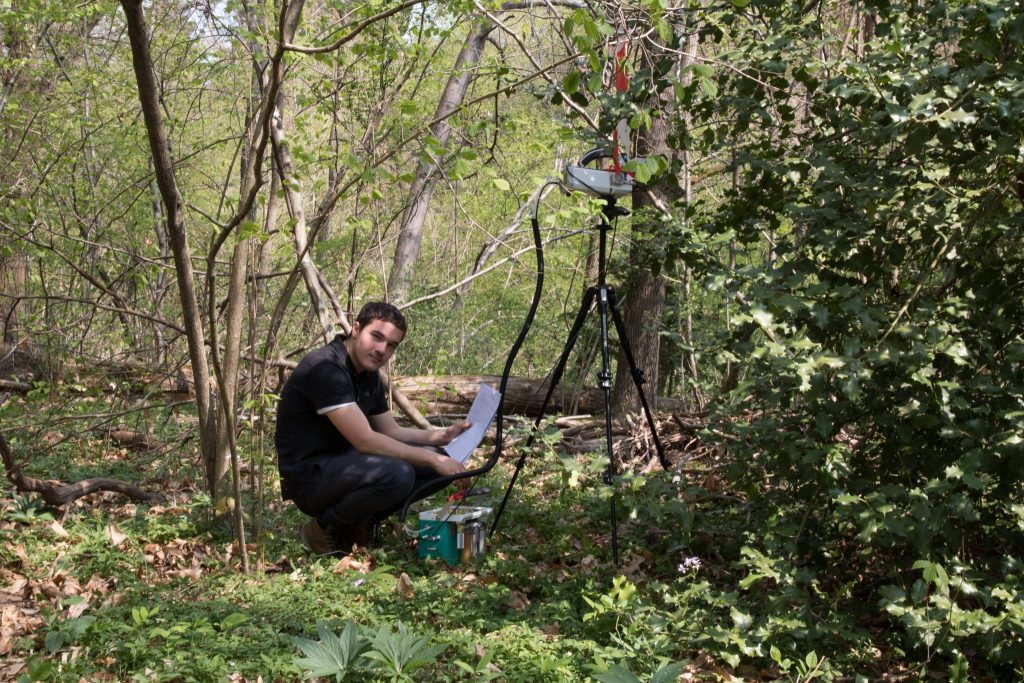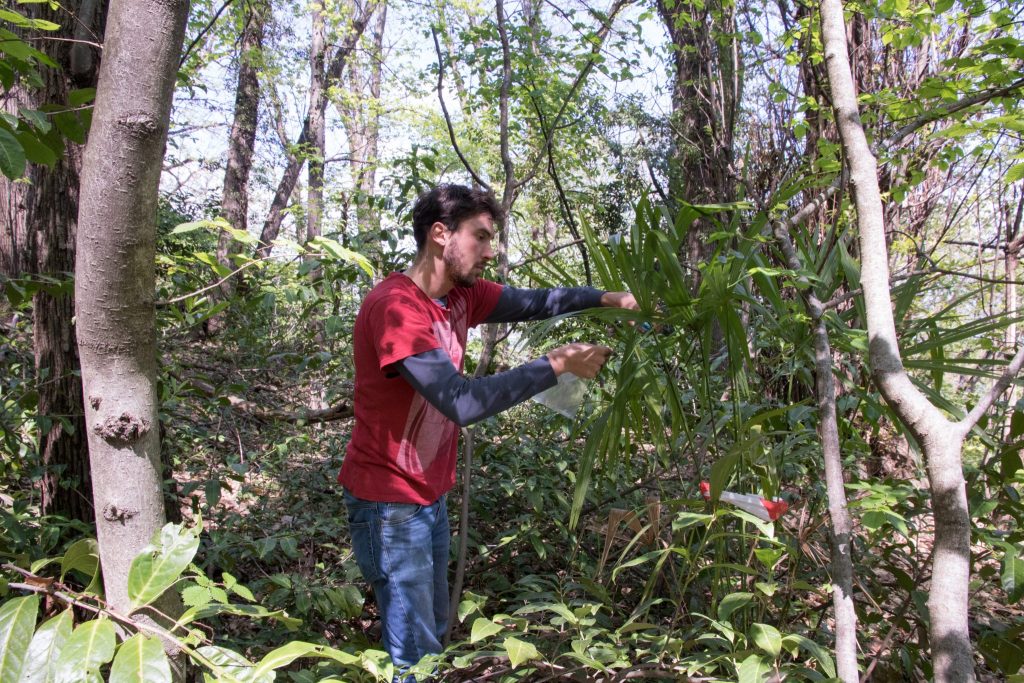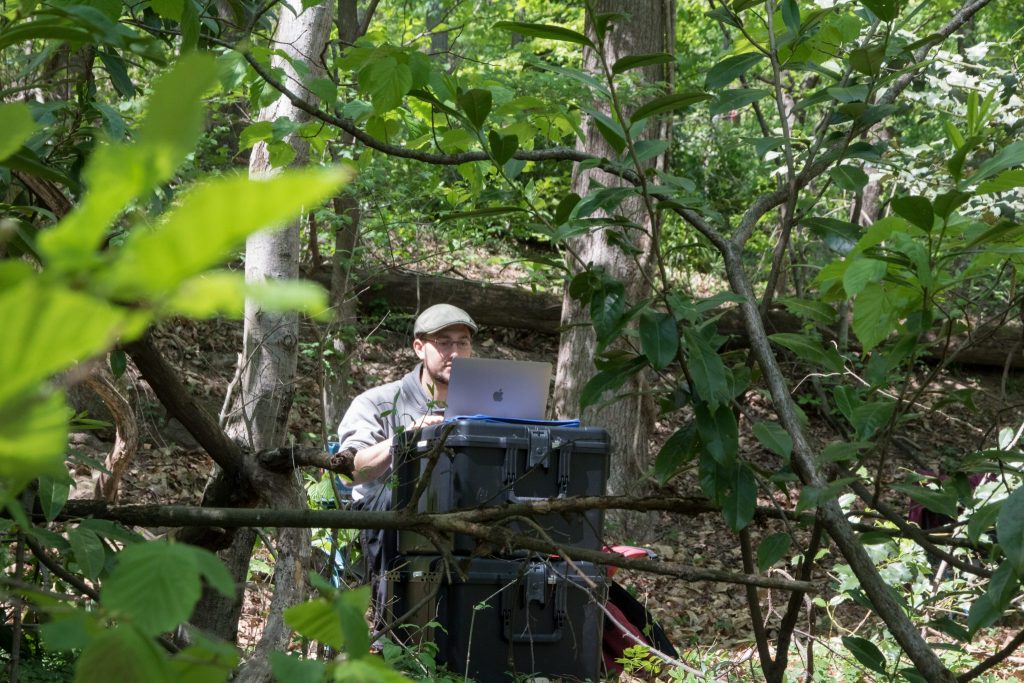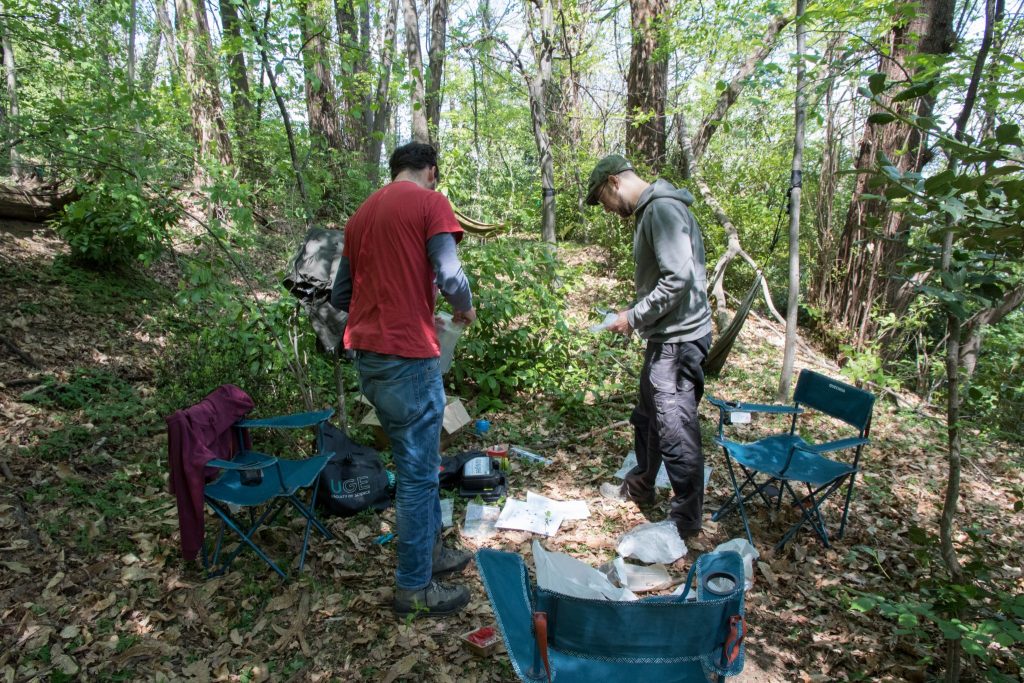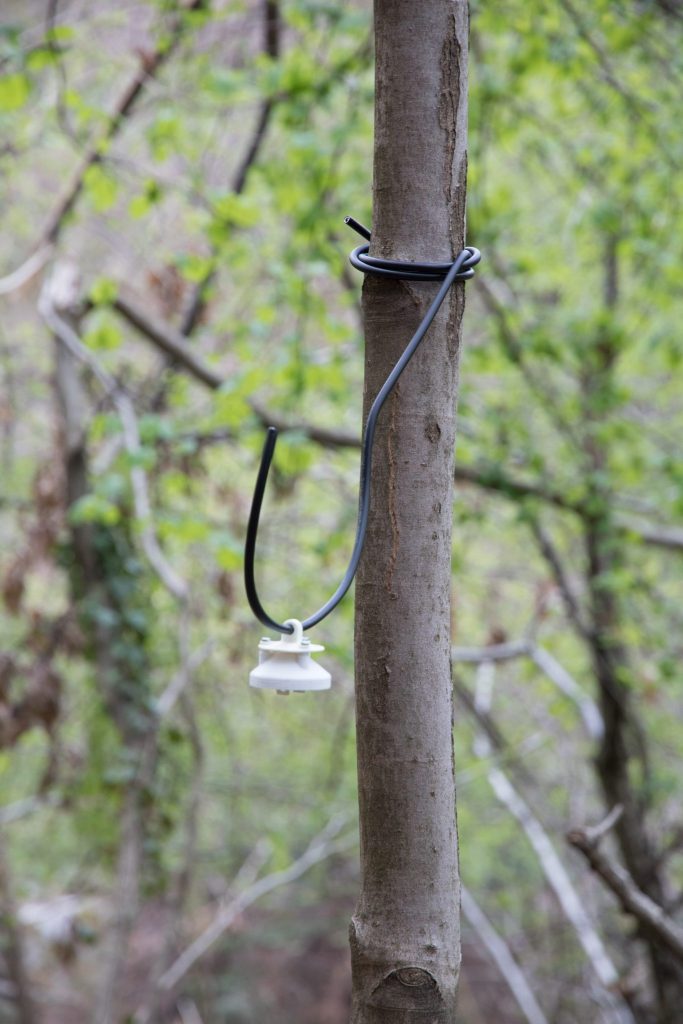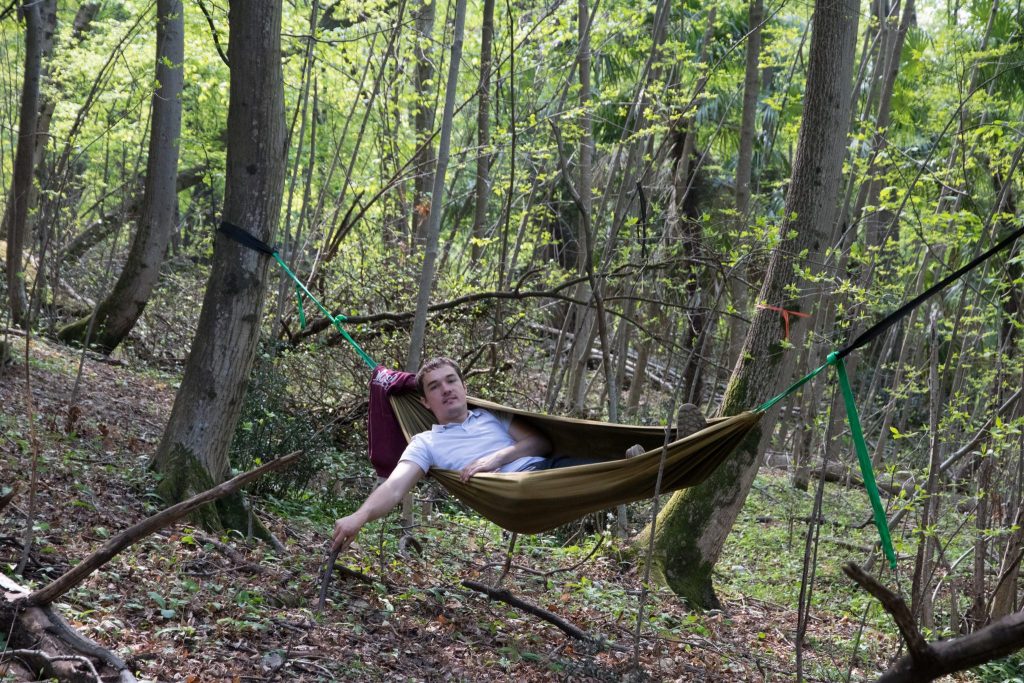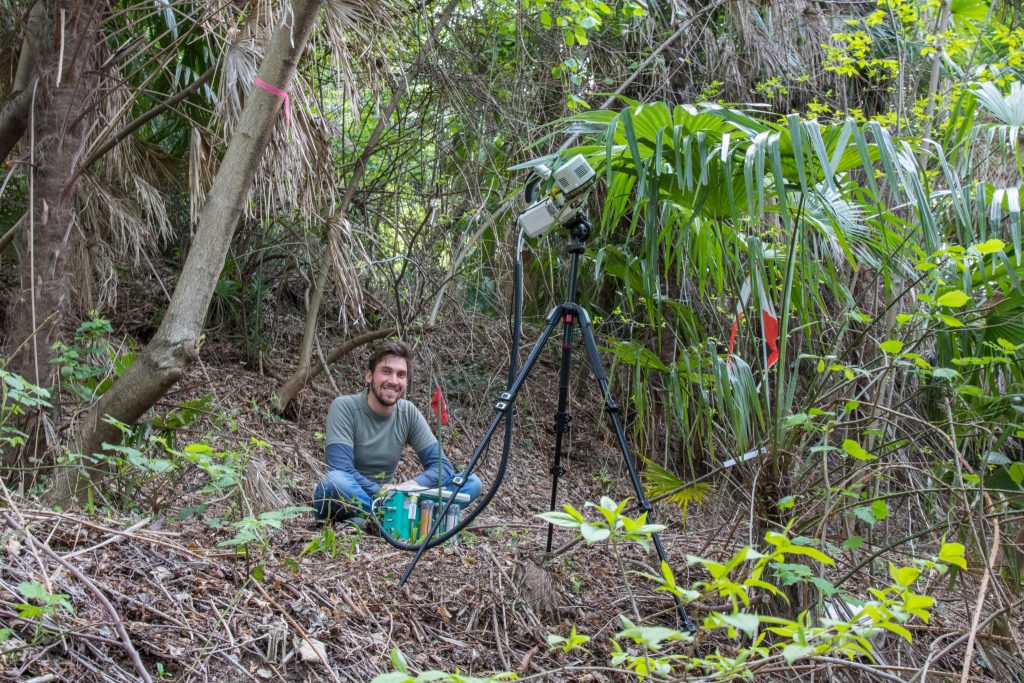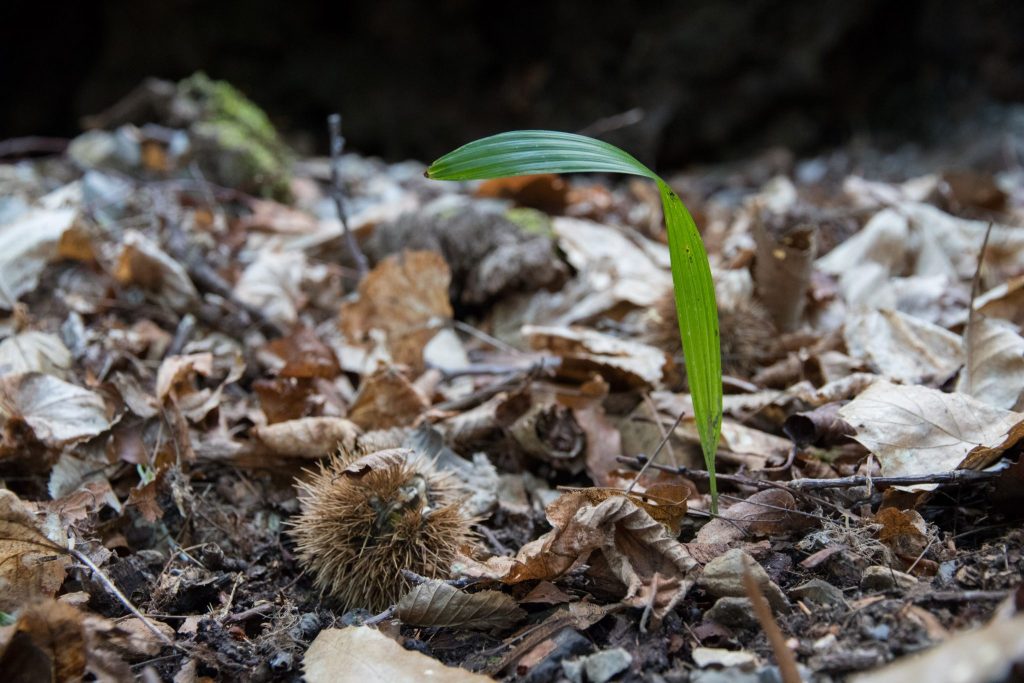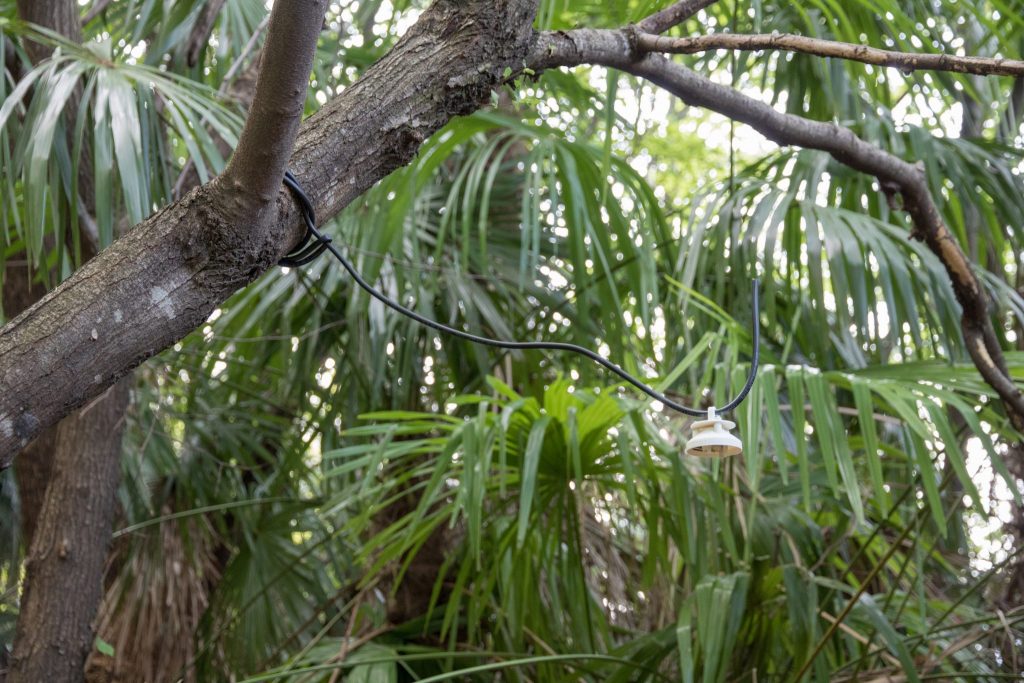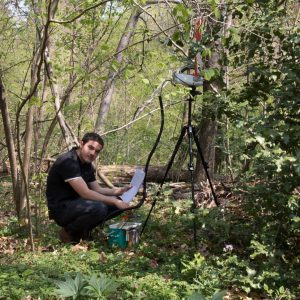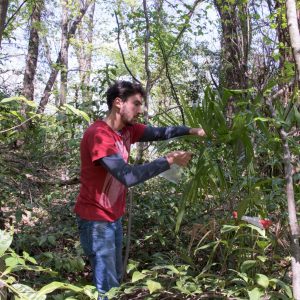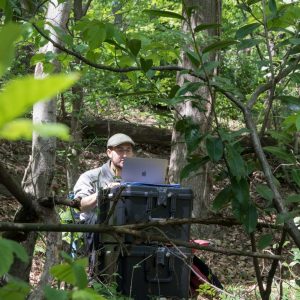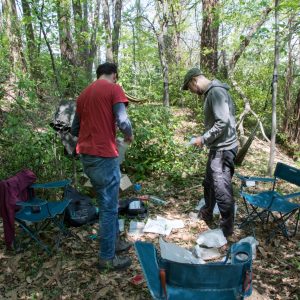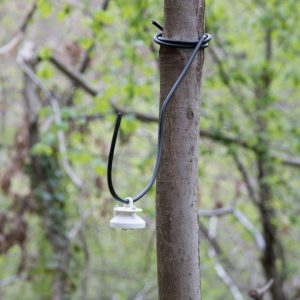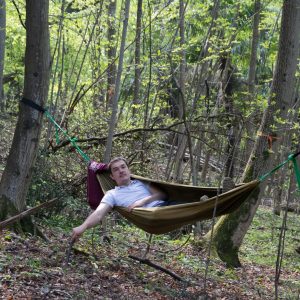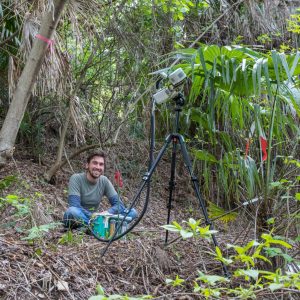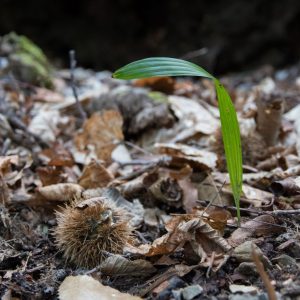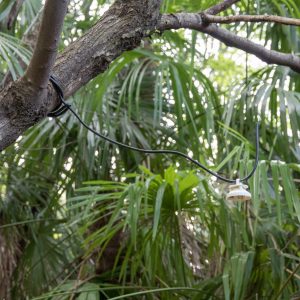This month, our scientist Christoph Bachofen – accompanied by our intern Thibaut Juillard and our civiliste Arthur Royston – went to the forests of Ticino for a few days. These first measurements mark the start of an experiment resulting from the collaboration with the WSL research group from Ticino.
The project aims at understanding the physiological traits driving the competitive strength of the non-native windmill palmin insubric forests. Trachycarpus fortunei is a very invasive palm tree present in Ticino, and the team investigates the mechanistic physiological traits that allow for an efficient water-use and carbon-uptake in this species compared to native vegetation.
The hypothesis is that high water transport rates under moist conditions and high water and carbon storage capacity under dry conditions allow T. fortunei saplings to maintain higher transpiration and photosynthetic activity throughout the year compared to native species.
Thus, the fieldwork includes measurements on one invaded and one control plot with no invasion by T. fortunei for each site. The team measured the physiological traits of non-native monocot evergreen (T. fortunei), native evergreens (Ilex aquifolium and Taxus baccata), and native deciduous (Castanea sativa, Quercus petrea, and Quercus robur) saplings. Thereafter, this physiological measurements will be complemented by anatomical analyses of the stem hydraulic properties of all focal species.
The assessment of mechanistic physiological traits in invasive vs. native species in Switzerland will eventually contribute to the development of ecological forecasting tools, and we hope the knowledge gained from this work will provide decision-makers with relevant information for land management decisions that will help maintain forest health and preserve biodiversity.
